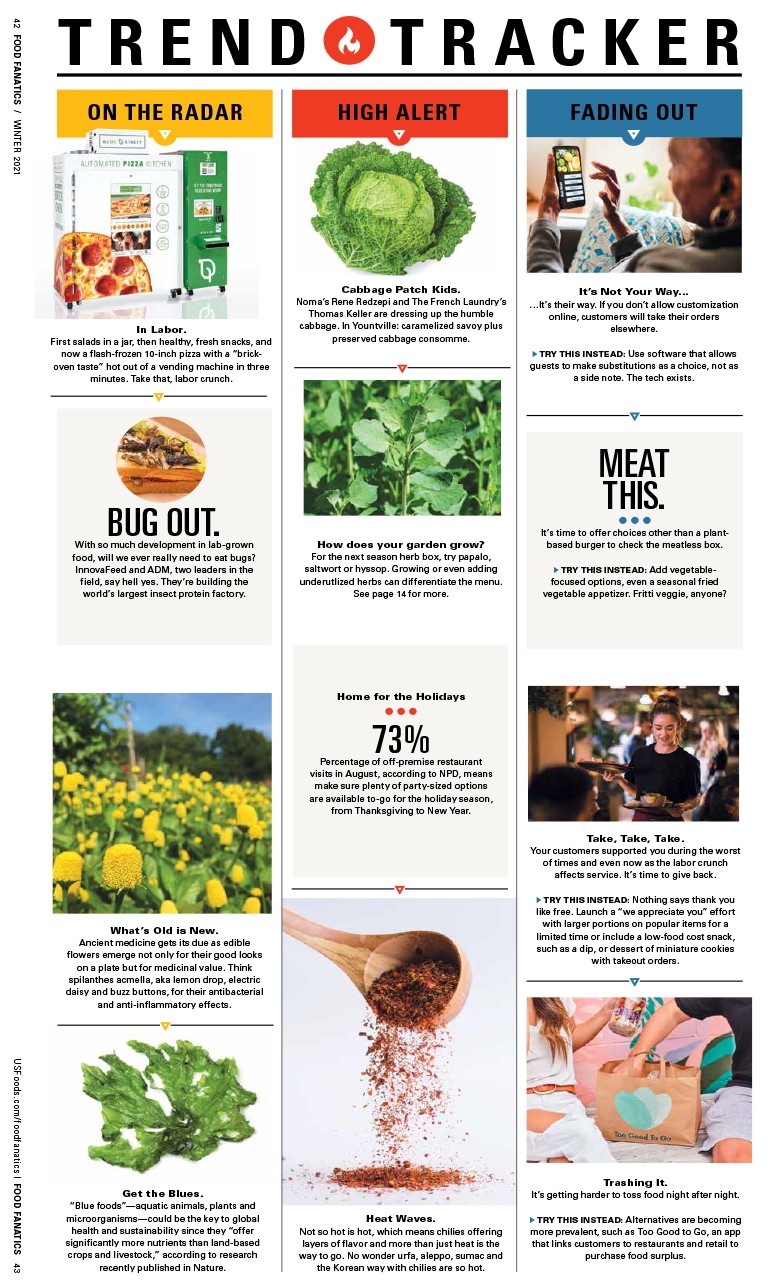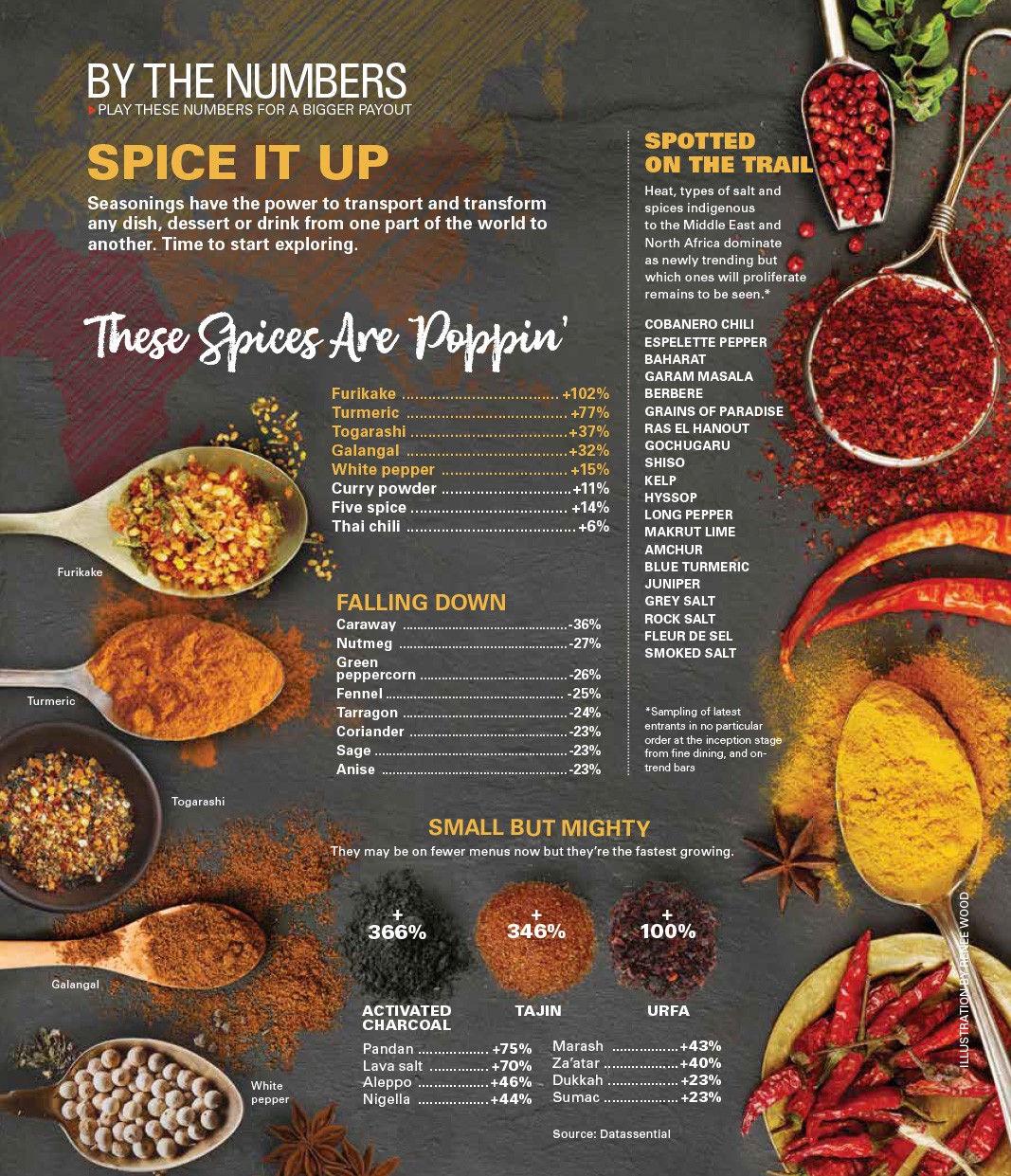Sweat, Sorghum and Southern Grit
Digging into the roots of Southern cuisine to reclaim an American culinary tradition
Southern chefs are tired of apologizing for their food.
Deemed fried, fatty, loaded with butter or ignorant, this misunderstood regional cuisine has suffered serious insult for years. It’s no one’s fault, really. The ingredients just weren’t there.
Over the past two decades, a movement has been building across the South and beyond as chefs resurrect a culinary tradition through modernist techniques, sourcing near extinct ingredients and reintroducing good ol’ fashioned storytelling.
The result is a contemporary Southern cuisine heavy on seasonal vegetables and driven by historical inspiration.
SEEDS OF CHANGE
When Chef Frank Stitt opened his acclaimed Highlands Bar and Grill in Birmingham, Ala., in 1982, ingredients as simple as stoneground grits seemed impossible to find. Mass produced quick grits were the industry norm.
“For a few years, I had to go to a health food store to buy organic stoneground grits until I contacted a source in North Carolina and bought them directly,” Stitt says.
Stitt, along with esteemed chefs Louis Osteen, formerly of Louis’ Charleston Grill in Charleston, S.C., and Ben and Karen Barker, formerly of Magnolia Grill in Durham, N.C., were among the first to champion better regional ingredients and refined cuisine in the 1980s, bringing a cross-pollination of ideas to the first Salute to Southern Chefs gathering in 1992 in Charleston. For the next six years, these annual dinners provided a forum for Southern chefs from Texas to Washington, D.C., to learn about each other’s regional nuances, and more importantly, to find out who had the goods.
"The rest of the country is starting to realize how important Southern cuisine is, so the people who are born with it in their blood celebrate it."
—Sean Brock of Husk Restaurant
As the Salute to Southern Chefs dissolved, an academic institute, the Southern Foodways Alliance, began to take shape at the University of Mississippi. Founders John Egerton and John T. Edge, along with a panel of 48 contributors, began documenting the oral histories of gumbo cooks, oyster mongers, boudin makers and other working-class culinary artisans. Many chefs credit the organization as the catalyst of the new Southern table.
“In white tablecloth restaurants, what you see is chefs reinterpreting provincial foodways,” Edge says. “That seems a great flowering of the research we’ve done over the years.”
A REGULAR SOUTHERN REVIVAL
Stitt now has an abundance of regional Alabama produce to choose from, such as North Chilton County peaches and apples, and Cullman County sweet potatoes. The rebirth of heirloom varieties has fostered creativity, bringing a dash of modernity to traditional Southern dishes. “When I grew up, there was always pickled peppers and hot pepper vinegar that were used on the table,” Stitt says. “I think we’ve gotten a lot more creative with using persimmons or figs, and we didn’t have as many heirloom varieties as we do now.”
Sorghum, an ingredient that was nearly obsolete until recent years, has seen a huge comeback. It’s making a cameo on many menus, from being drizzled over johnnycakes at Holeman & Finch in Atlanta to enhancing the “Muddy Pond” baked beans at Beasley’s Chicken + Honey in Raleigh, N.C. It’s also touching desserts like the spicy sorghum pecans at Silo in Nashville, Tenn.
Aside from elevating quality, resurrected ingredients like sorghum, Carolina gold rice and bennecake flour symbolize traditional Southern home cooking. Teary-eyed customers are not uncommon at Husk in Charleston, S.C., says Chef-owner Sean Brock, whose diners wax nostalgic about the tomatoes or pork chops that remind them of their childhood. “People come to Husk because they’re hungry for a story and a connection and emotions,” he says. “It’s not about paying for something; it’s about experiencing something.”
REBUILDING LIFE BACK HOME
Like many Southern fine dining chefs, John Besh spent the early part of his career distancing himself from the cooking of his New Orleans home. “I took it for granted,” he says. “I wanted to go to Europe and learn a more refined style of cooking. Yet every time that I moved away, I craved coming home for that food that I grew up with.”
Blame the negative perception on stereotypes or widespread bastardized Southern cuisine—dishes saturated with spices and low-quality ingredients, and lacking the simple flavors from the “holy trinity” of Creole cooking: onions, bell pepper and celery.
“I think it’s just a backlash from so many poor touristy restaurants not applying great technique to the food and allowing it to become loosely defined into what most people think is Creole food,” Besh says. “I didn’t want to be one of those chefs who just threw a bunch of stuff in a pan and called it Creole.“
"Some call it ‘soul food,’ other people call it ‘Southern food’—it’s food that’s made its way throughout the arteries of the country."
—John Besh of Restaurant August
Yet when Hurricane Katrina devastated New Orleans in 2005, Besh realized the area was at risk for losing its culture and cuisine. His passion for New Orleans regional cooking renewed, spawning an empire of nine properties, including James Beard award-nominated restaurant, August.
Besh and his contemporaries, like Susan Spicer of Bayona and Donald Link of Herbsaint and Cochon, are preserving regional cuisine using throwback recipes with a refined, seasonal edge. Favorites like gumbo, étouffée, boudin and fried okra often fit the bill. “Building authenticity comes from your background,” Besh says. “I always say the proper way to make a gumbo is the way that your mama made it. It comes down to the rudimentary food, family and table.”
THE SOUTHERN Cooking DISCIPLES
The definition of “Southern” is characterized by more than a geographical border, which has many interpretations. Over time, Southern microcosms have popped up across America—in Chicago, the San Francisco Bay Area and New York City. Some purists will always contest these enclaves’ authenticity, but Stitt argues that replicating the spirit of Southern cooking is no different than mastering any other ethnic cuisine.
“You need to understand the history of a dish, the ingredients that are important to it, and then you can represent your own take on that dish,” Stitt says.
In fact, it was a Yankee—Ari Weinzweig from Zingerman’s Roadhouse in Ann Arbor, Mich.—who introduced Stitt to a bacon-infused seafood dish called Carolina Fish Muddle from coastal North Carolina.
Still, ambassadors looking to redefine Southern cuisine haven’t always been welcomed with open arms. When Chef Paul Fehribach opened his 2008 coastal Southern restaurant Big Jones in Chicago, diners accused him of being anything but authentic. With only a handful of restaurants executing French Quarter or meat ‘n three-style concepts, Fehribach had plenty of room to play with regional dishes.
Ingredients such as Sea Island red peas and Carolina gold rice were still new to the Midwest market, so Fehribach decided to spark dialogue by dating a dish from 1730—a Gullah Island version of Hoppin’ John called “Reezy Peezy.” Its success inspired a 2012 overhaul of his menu, which now includes historically inspired and dated dishes.
“It started as a move to pass the narrative aspect of dining,” Fehribach says. “I thought, what a great opportunity to show people how regionally distinctive Southern food is and how it’s not just this narrow set of dishes like fried chicken and barbecue pork shoulder.”
Even in the South, redefining regional cuisine is relatively new. In Miami, a city dominated by palm trees and Latin culture, Chef Jeff McInnis was free from competition when he opened Yardbird in October 2011. Alongside the roster of fried chicken and shrimp ‘n grits, Yardbird’s menu is peppered with Floridian touches like South Florida mangoes, Apalachicola oysters and Key West pink shrimp. Like Fehribach, McInnis has seen a upswing of competing restaurants since making a mark in his area.
"Saying ‘the South’ is like generalizing Italian or Chinese food. The discussion never ends about what’s ‘Southern’ or where the South is."
—Chef Linton Hopkins of Restaurant Eugene at the Star Chefs International Chefs Conference
“South Florida is more of a Latin community and cuisine, but I think it was the right time to bring a little bit more of the South back to South Florida,” McInnis says. “It wasn’t difficult by any means—it was something people wanted because there was a void here.”
THE FUTURE OF SOUTHERN CUISINE
After unearthing the historical meaning behind regional American cooking, chefs are putting a personal spin on it.
At Seersucker in Brooklyn, N.Y., pimento cheese is packed into cannelloni with gran queso, pickled collard stems and surryano ham chip. Inspired by a trip to Japan, Brock began a quest to find Southern “dashi”—the essence of his local cuisine—using regional ingredients like collard greens to produce seaweed or “Kentuckyaki,” fried chicken wings with pig ear lettuce wraps and pickled cabbage. “There is a certain sacredness of being proud of the land and the connection to those farm-raised products,” Stitt says. “Now, chefs in the South and people who love Southern food are able to use great ingredients—and they’re much more available. That’s been a really big evolution in the past 30 years.”
BISCUITS ON A BENDERThe ubiquity of the biscuit shows the far-reaching appeal of this Southern staple. It’s a butter-loaded guilty pleasure by itself, but it goes over the edge with all sorts of killer interpretations. Wing Wings San Francisco, Calif. Pine State Biscuits Portland, Ore. Sprig Restaurant Decatur, Ga. Hillside Farmacy Austin, Texas Pulino’s Manhattan, N.Y. Red Pony Restaurant Franklin, Tenn. Varanese Louisville, Ky. |



